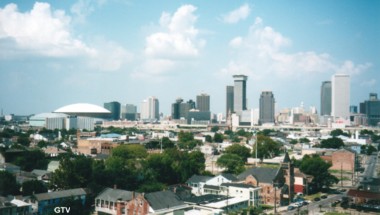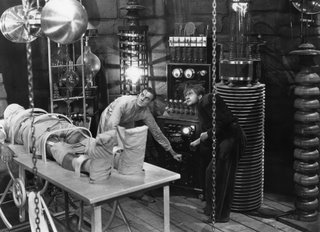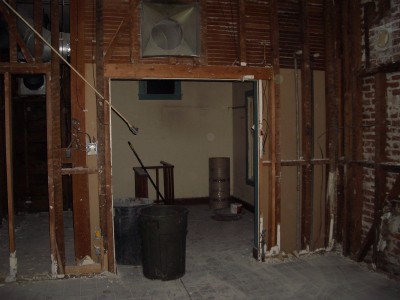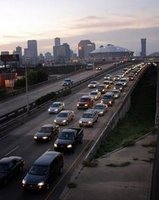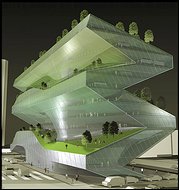 When Marlon Brando once said "I coulda had class. I coulda been a contender. I coulda been somebody, instead of a bum, which is what I am, let's face it.", he could have been talking obout modern-say New Orleans. But if some developers have their way, New Orleans could once again have class.
When Marlon Brando once said "I coulda had class. I coulda been a contender. I coulda been somebody, instead of a bum, which is what I am, let's face it.", he could have been talking obout modern-say New Orleans. But if some developers have their way, New Orleans could once again have class.
After years in the making, a plan to transform the riverfront now looks like a vital nugget in the city's rebuilding. Planners want to tear down warehouses and wharfs and build riverside promenades, condominiums, a cruise ship terminal, a river research center and museum, hotels and an amphitheater on the big crescent bend in the river _ hence, the Crescent City _ to give audiences sweeping views of the New Orleans skyline. Plans call for public and private funds for the projects, which could cost well over $300 million to complete.
"The river and riverfront were the key to the founding of this city, and similarly I think it's the key to the future," said Douglas Meffert, a Tulane University river studies professor involved in the riverside research center. "I think we need to think of the river as our front yard again."
That doesn't mean there wont be difficulties.
But the difficulties of riverfront development are in plain view: A panorama of vacant buildings _ a power plant, factories, warehouses _ overrun with weeds and pigeons.
There have been successes _ at least before Katrina struck. The Rouse Co., the national developer, counted the Riverwalk Marketplace mall as one of its more profitable properties; cruise ship and steamboat companies plied the river; and a sprawling riverfront convention center buzzed with activity. Most of that development was sparked by a World's Fair in 1984 centered on the Mississippi.
But not everyone is buying into this future-by-the-river scenario. Neighborhood groups worry the city's soul would be marred if glitzy condos for out-of-town snowbirds and malls replace the old riverfront.
"New Orleans was founded as a port city in the French Quarter, and to see maritime activity going on there to this day is very exciting," said Nathan Chapman, president of Vieux Carre Property Owners, Residents and Associates Inc., a group that looks after the wishes of French Quarter residents and businesses.
Attempts already have been made to raise the height limit of buildings from 50 feet to 75 feet to accommodate the planned development, said Chris Costello, president of the Faubourg Marigny Improvement Association.
"To go up an extra 25 feet makes it very egregious in our neighborhood," Costello said. The Faubourg Marigny is made up of winding streets and Creole and shotgun cottages with lush backyards immediately down river from the French Quarter.
Instead of fixating on new development, the city should focus on repairing blighted property and turn that into the living space that is so urgently needed, Costello said.
It shouldn't be impossible to overcome these obstacles. In fact, the concernes stated above should be look upon a constraints that will make the developement much more attractive. But if the investors are simply looking to make a quick buck instead making a long-term investment in the city, they might find themselves being made an offer they can't refuse.
 The City of New Orleans touts it free Wi-Fi access but many have trouble logging-on.
The City of New Orleans touts it free Wi-Fi access but many have trouble logging-on.